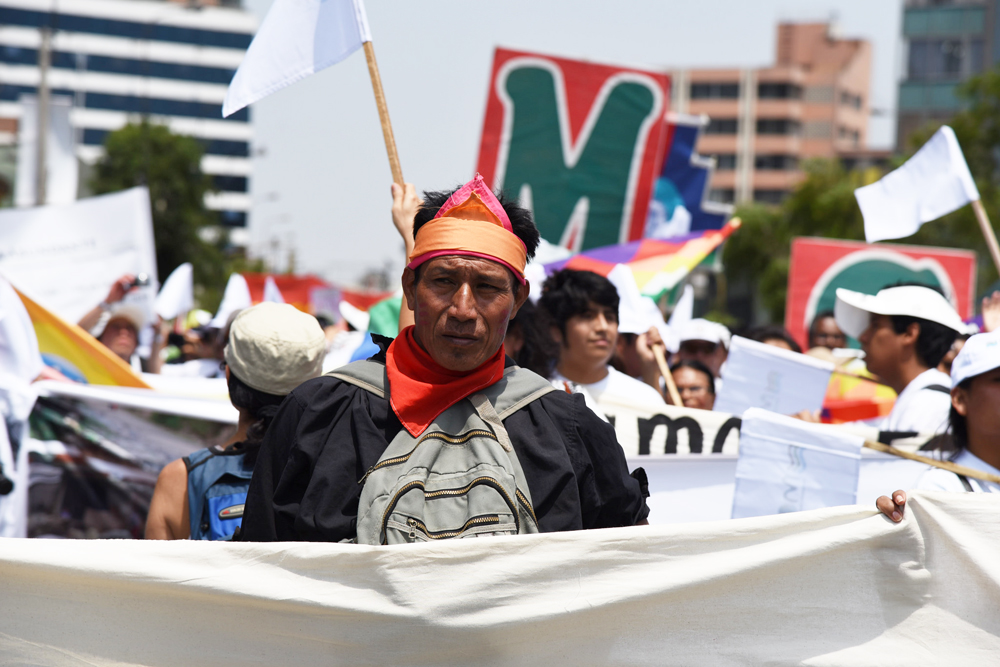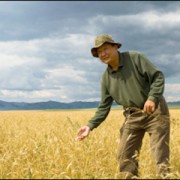Export Agriculture Drains Latin America’s Water Supplies
Peruvian asparagus and Costa Rican pineapples illustrate the threats global agribusiness poses to the environment.

A recent study by the development charity Progressio found that asparagus production in Peru’s arid Ica Valley is depleting local aquifers so fast that water wells are running dry, the Guardian reports.
Irrigation for the asparagus beds in the desert area along the country’s Pacific Coast has dropped the water table as much as 8 meters a year in some places, threatening to trigger conflicts over natural resources and harm Peru’s agricultural boom.
“The rapid decline of the water table in Ica—almost certainly the fastest rates of aquifer depletion anywhere in the world—should set alarm bells ringing for governments, investors, agribusinesses and retailers involved in Ica’s asparagus industry,” said Nick Hepworth, the report’s lead author. “But the problem is broader. We need action now to develop a robust market-based standard to ensure water is managed and used sustainably in Ica and beyond.”
The asparagus beds, developed over the last 10 years thanks to millions of dollars in World Bank investments, have created 10,000 new jobs in the poverty-stricken region but led to a range of conflicts. A World Bank executive investigating the water shortage complaints in April was shot at when he came across illegal wells, Reuters reports.
According to the Guardian, the intensive water use by corporate farms has left smaller farmers struggling to obtain enough water for their crops and dried up two wells serving up to 18,500 people in the valley.
The development of export-oriented agricultural farms is part of a government strategy to diversify the Peruvian economy.
The Guardian report says that much of the asparagus production goes to the United Kingdom, which is the world’s third-largest importer of fresh Peruvian asparagus. Peru, meanwhile, has become the world’s top asparagus exporter, earning more than $450 million a year from the trade, with 95 percent of its production coming from the Ica Valley.
The country faces other water challenges as well. As Circle of Blue reported in September, high temperatures and reduced rainfall have left the Amazon River in Peru at its lowest level in 40 years, while severe water shortages along the country’s Pacific Coast and the uncertain future of its melting Andean glaciers threaten its agricultural boom.
Similar agricultural conflicts are arising in Costa Rica, which grows three out of every four pineapples on the shelves of U.K. supermarkets. The trade comes at a high cost to workers’ health and local water supplies, according to an investigative report by the Guardian.
The report was conducted in conjunction with Consumers International (CI), an umbrella organization for consumer groups across Europe.
Among the report’s findings:
- Massive use of agricultural chemicals has contaminated drinking water in communities around the plantations, forcing one group of villages to get their water from tanker trucks for more than three years.
- Repeated chemical spills have damaged the environment, with a June fire at a chemical dump used by Dole spilling toxic chemicals into the Batan River and killing fish and crocodiles for miles downstream.
- Workers reported serious health problems from exposure to the chemicals used on pineapple plantations, including accidental chemical poisoning on Del Monte and Grupo Acon farms.
As Circle of Blue reported earlier this month, the U.K.’s own agricultural sector faces challenges from climate change in the coming decades that will reduce the water available for agriculture and require new farming practices across the country.
Sources: Progressio, the Guardian, Reuters











Leave a Reply
Want to join the discussion?Feel free to contribute!